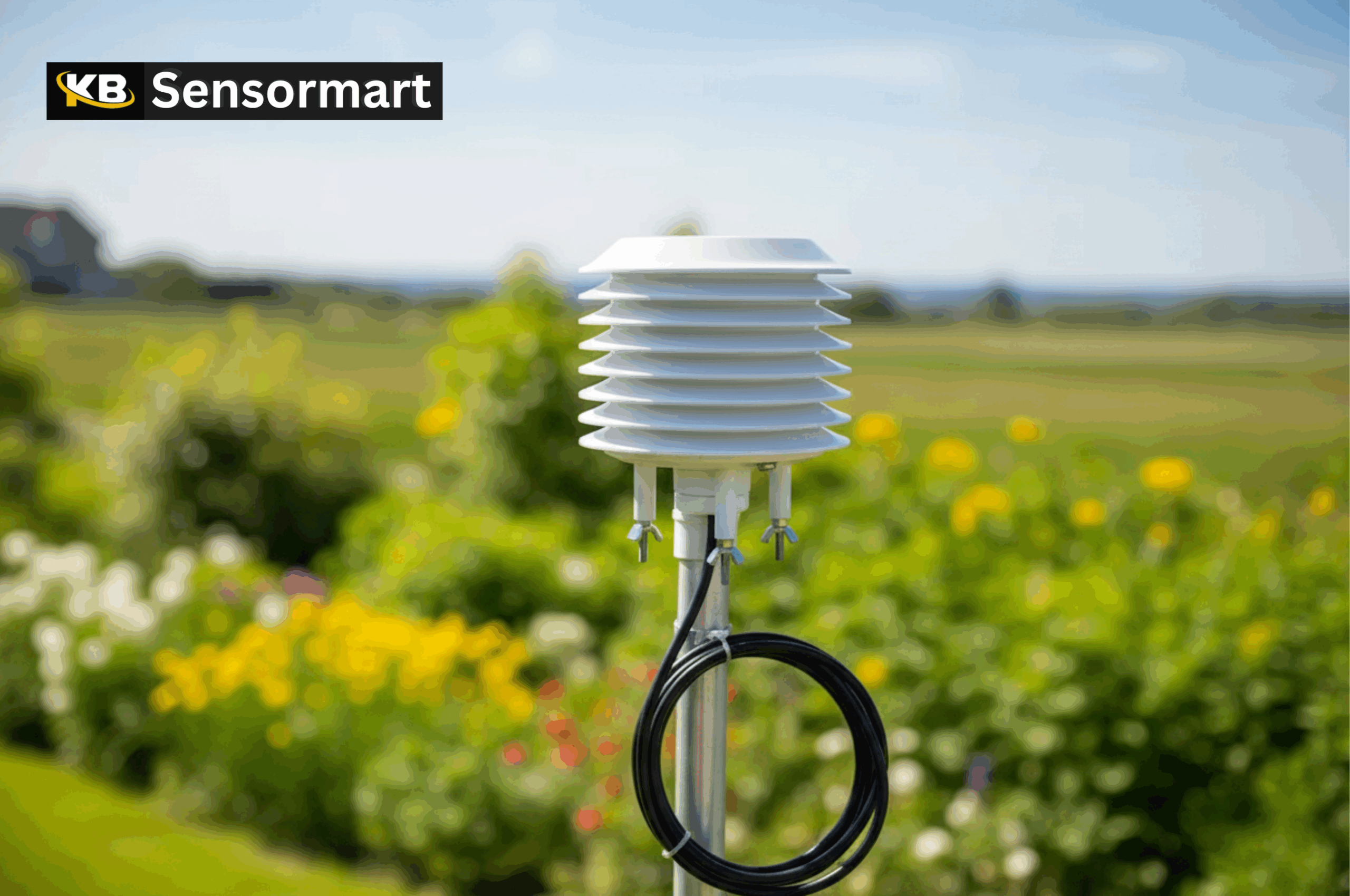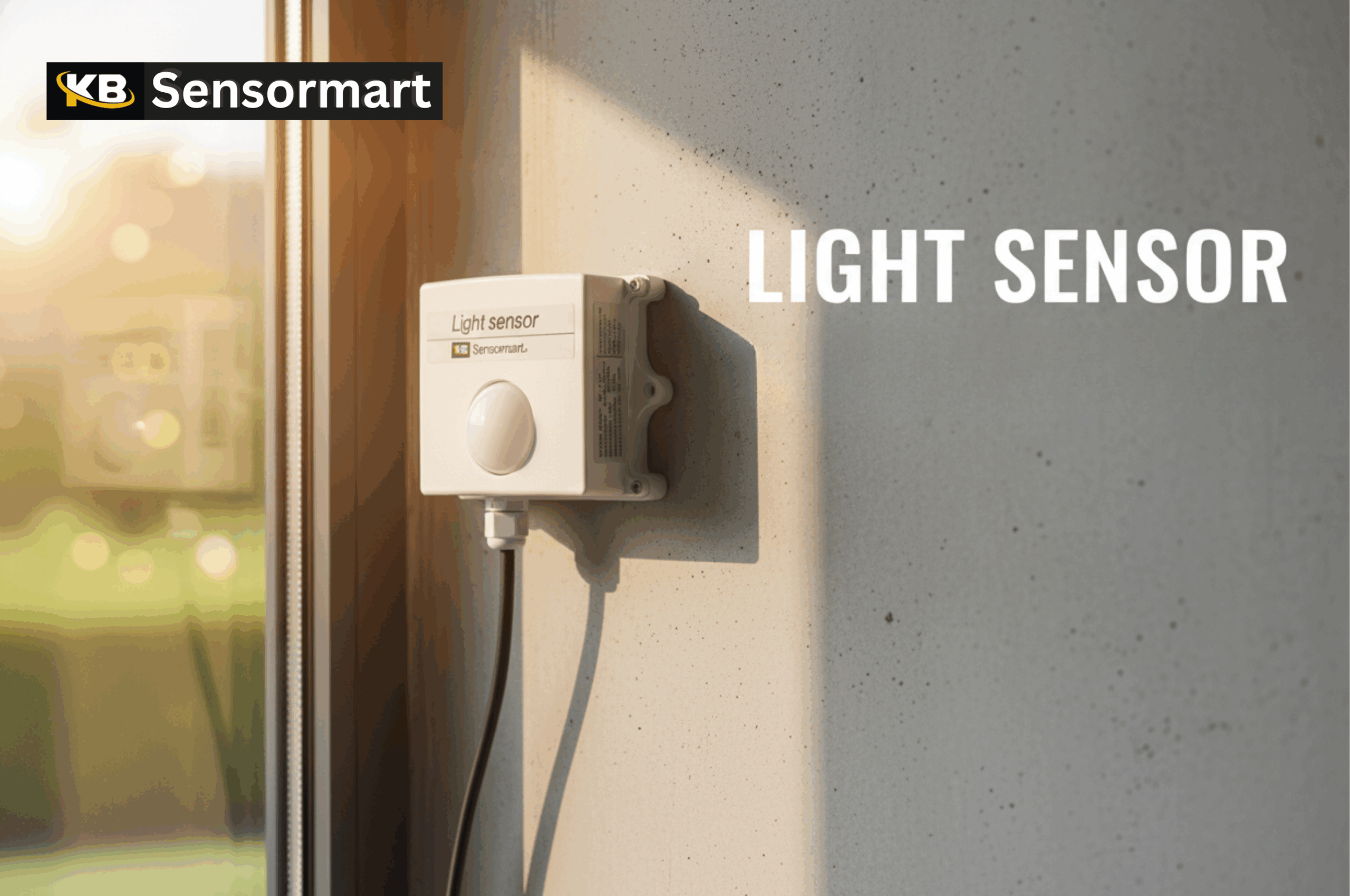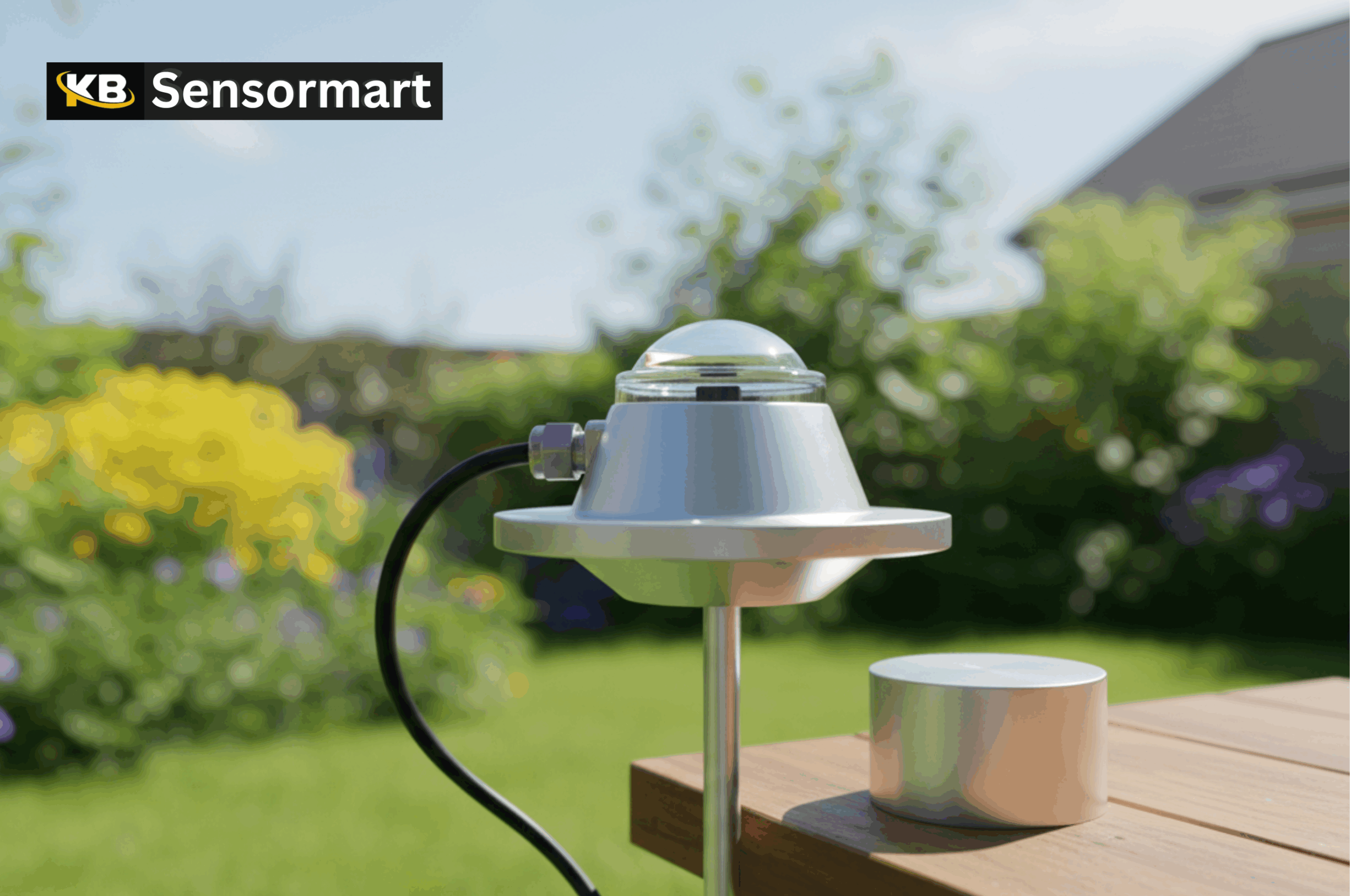A temperature and humidity sensor is a small device that tells you how hot or cold the air is and how much water vapor is in it. It changes this information into tiny electrical signals so machines or computers can read it.
Many sensors, like the ones from Sensormart, measure the air around you and send the temperature and humidity data to a screen or software. This helps people check if a room, greenhouse, storage area, or workplace has the right environment.
How Do Temperature and Humidity Sensors Work?
Temperature and humidity sensors help us know how warm the air is and how much moisture is in it. When the air changes, the sensor’s electrical parts change too. The sensor then turns these tiny changes into numbers that we can read. Different types of sensors work in different ways.
1. Resistive Temperature and Humidity Sensor
A resistive sensor has special parts inside that react to heat and moisture.
When the air gets warmer or more humid, the resistance inside the sensor changes.
The sensor then turns this change into a simple electrical signal.
This signal becomes the temperature and humidity reading you see.
Sensormart offers sensors that use this easy and steady method.
2. Capacitive Temperature and Humidity Sensor
A capacitive sensor uses a thin layer of material that reacts when the air changes.
When the air gets hotter or wetter, this layer changes how much charge it can hold.
Because of this, the sensor’s capacitance changes too.
The sensor reads this change and shows the temperature and humidity.
These sensors are very common and work well in many places.
3. Electrothermal Temperature and Humidity Sensor
An electrothermal sensor works by heating up a tiny part inside.
As the piece warms and cools, the sensor checks how its resistance changes.
From this, it can tell the temperature and how much moisture is in the air.
These sensors often include a small heater, a temperature reader, and a humidity reader.
What Is the Principle of a Humidity Transducer?
A humidity transducer is a small part inside many temperature and humidity sensors. It helps the sensor tell how much moisture is in the air. At Sensormart, our sensors use this same idea.
Inside the sensor, there is a special part called a humidity-sensitive capacitor. It is made of layers like a base, two tiny metal plates, and a special material in the middle.
This middle material reacts when the air gets more or less humid.
- When the air has more moisture, the material changes, and the capacitor’s value goes up.
- When the air is drier, the value goes down.
The sensor has a small circuit that turns these changes into a simple voltage signal.
This voltage moves from 0 to 1 volt, which matches humidity from 0% to 100%.
Your device can then read this signal and show the correct humidity level.
How to Choose the Best Temperature and Humidity Sensor for Your Project
Picking the right sensor is important if you want good readings. Here are three easy things to check when choosing a sensor from Sensormart:
1. How Fast the Sensor Responds
Some sensors react quickly when the air changes, and some react more slowly.
A fast sensor can read a wider range of changes without delay.
If the sensor reacts slowly, it might miss quick changes in the air.
2. The Sensor’s Reading Range
The reading range is the area where the sensor’s output matches the change in the air.
When this range is wide, the sensor can measure more types of temperature and humidity levels.
Make sure the sensor you choose can measure the range your project needs.
3. Stability Over Time
A good sensor stays accurate even after being used for a long time.
Its stability depends on how it is built and where it is used.
Before choosing, think about the place where the sensor will work—hot, cold, wet, or dry.
Pick a Sensormart sensor made for that kind of environment.
What About the Sensormart Sensor?
The Sensormart sensor is easy to read and easy to use. It has a large screen and buttons on the front. Inside, it uses a high-quality temperature and humidity part made in Switzerland. This helps it stay accurate and work well, even when there is noise or interference around it.
The sensor checks the temperature and humidity automatically. You can see the numbers on the screen, and it can also send the data to software through RS485 or Wi-Fi.
At Sensormart, we make sure these sensors work smoothly for many kinds of projects.
RS485 Temperature and Humidity Sensor

This Sensormart sensor takes new readings every 2 seconds.
By default, it sends the data every 20 seconds, but you can change this time from 1 second to 10,000 seconds, depending on what you need.
You can also choose how often it records data, from 1 minute to 24 hours.
The sensor comes with a built-in alarm system. After you set the high and low limits for temperature and humidity, the sensor will beep or flash if the numbers go out of range.
It can also store up to 65,000 recordings, which helps you track changes over time.







Leave a Reply